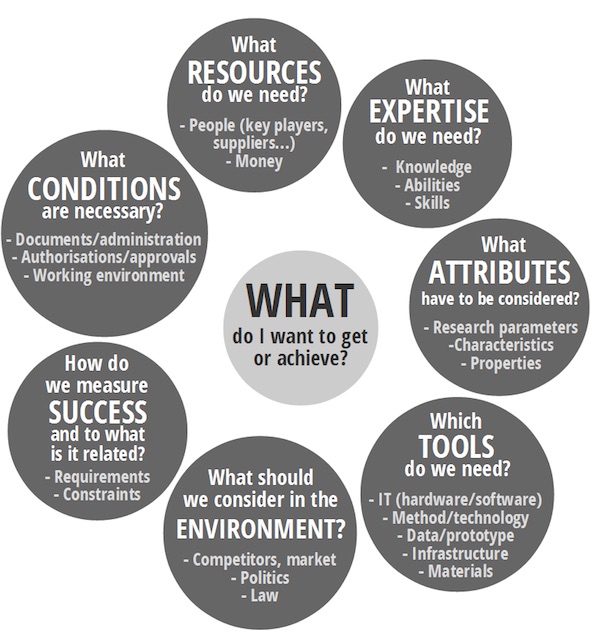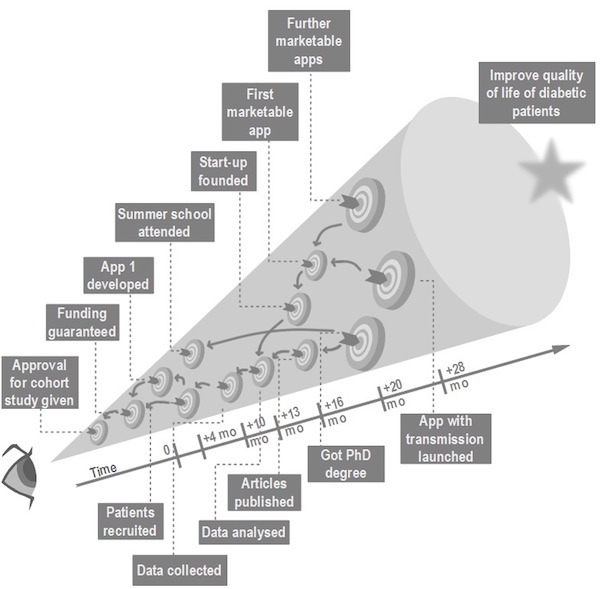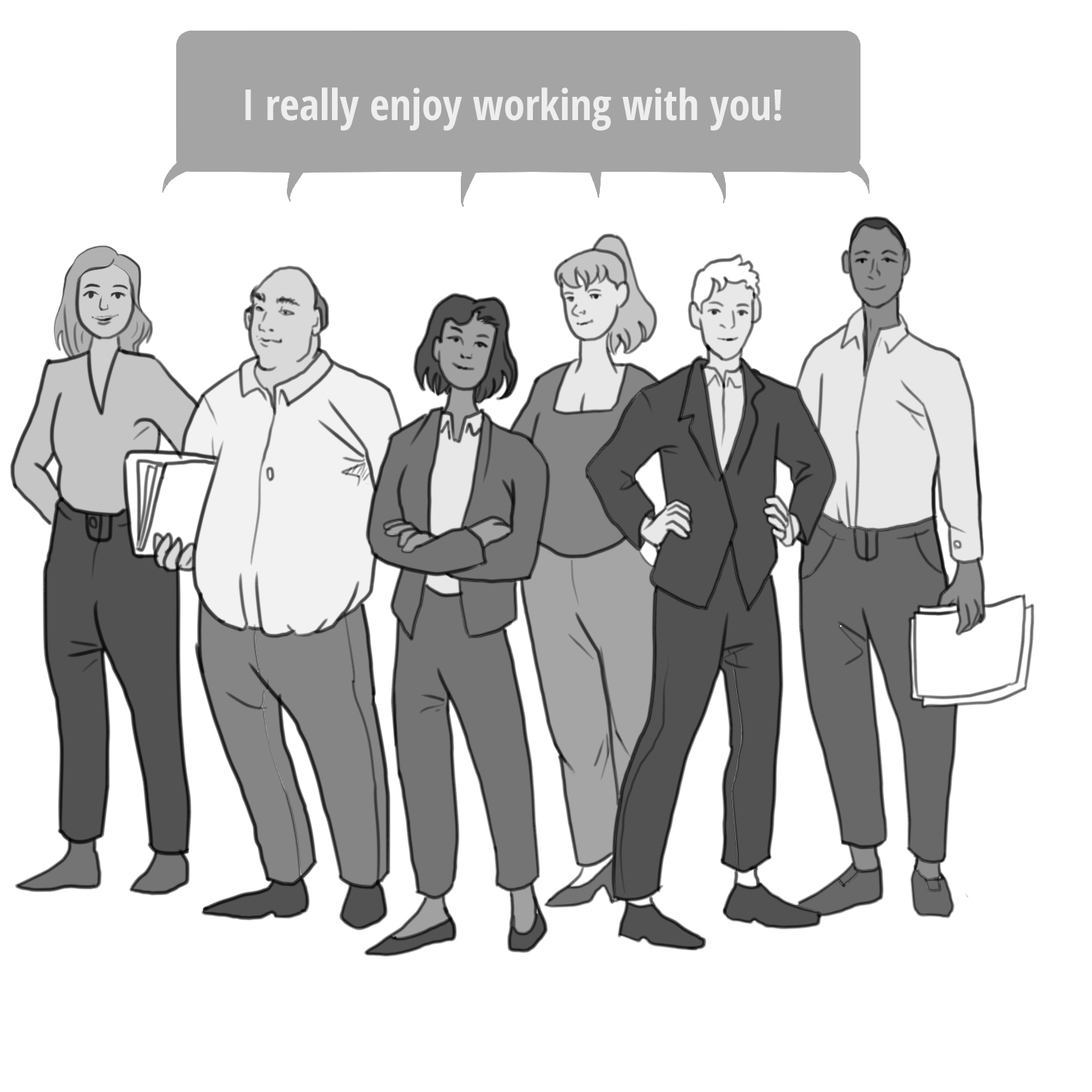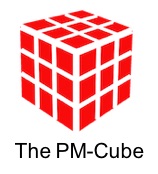17 reasons to apply the PM-Cube and its methods [and succeed]
Some of the benefits when applying the PM-Cube to your research project:
Discovering the PM-Cube was a lifesaver: now I know what to expect and what techniques to apply in order to manage people, time and resources.
In my eyes, project management skills are not only important while working on a project, but they are even a
prerequisite for a successful research proposal.
The PM-Cube allowed me to understand some of the obstacles that had previously hindered the successful completion of the research projects I was managing.
The PM-Cube © and its methods
The PM-Cube (Project Management- Cube) is a practical tool developed by Cubisma Ltd that has allowed thousands of researchers, regardless of their field and their position, to successfully manage the complexity of their projects and to deliver high-quality results.
The PM-Cube allows researchers to:
– plan their work while maintaining flexibility
– write convincing proposals
– lead performing teams
– communicate effectively
– find innovative solutions
– control projects
– work in a more relaxed manner
You’ll find below some crucial methods of PM-Cube. But first, let’s define exactly what a project is and is not.
A project is unique!
The definition of a project is that it is unique. It means that for the first time, something will be performed by someone, or a group of people, in a specific way. The consequence is that there is a beginning, and also an end. Funding will be necessary to cover the costs, and several people will be involved in these activities.
In research, as soon as you are studying a new aspect, using a new technique or method, these activities will represent a project for you. The development of any new instrument, technique, method, product, organization, etc is also a typical project. The work performed during a PhD thesis can be grouped into one or several projects.
The organization of a conference is also a project since its focus, its environment as well as the audience are unique. In addition, the organization team is usually specific for each conference.
In your life, the organization of a big party can also be considered as a project. However, going shopping, for example, is too simple and performed too often to be treated as such.
Cubisma offers the following products and services:
Training and coaching for researchers: for individuals and groups, online and/or on-site, e-learning and workshops.
The E-book.
The free App The PM-Cube summarizes its methods.
The CREATES © method to understand your context
One of the first PM-Cube methods is the system analysis. It allows researchers to understand the complexity of their project and to clearly describe their content. This enables them to precisely define their objectives, to avoid misunderstandings, to detect risks and to quickly manage the unexpected.

In my 3rd year of PhD, I felt as though my project was failing, as if it had not progressed since I had started. The result of the CREATES method impressed me a lot, because it showed clearly what fators I can influence and what I do not have to blame myself for. Setting objectives for myself and structing my project with the methods of the PM-Cube helped me to stay on track. Now I feel better an continue my PhD with new motivation and energy.
The Project -Cone © to define your research objectives
The definition of the objectives of a project allows researchers to reach a clear and common understanding of its realization with their sponsor(s)/PI/boss. This will also enable them to effectively plan their project and keep the team focused.
The Project-Cone visually represents all the intermediate and final objectives, as well as their dependencies.

I was about 9 months into my Postdoc in material science and had 9 more months. I needed to reorganize and make my future work efficient in order to optimize the time I had left. The PM-Cube and its methods offered me the instruments to dig into the most challenging aspects of my project, offering new solutions. I am now obtaining fruitful results. I highly recommend applying the PM-Cube also at an earlier stage of the academic career ladder.
Plans are meant to be changed!
Planning the project activities, the workload of the project members as well as the budget is always challenging since it is unfortunately impossible to predict everything. However, researchers can increase the quality of their guesses when writing a research proposal or during its realization.
The key steps are first to understand the context and have defined the main objectives. Secondly, it is crucial to structure the project, which will automatically allow the researchers to obtain the Gantt chart for their entire project.
During the realization phase of their project, the researchers will incrementally plan more into detail their next phase which might last weeks to months. Because they take into consideration the actual situation, their plan will be realistic, therefore useful!
I was approaching the middle of my postdoctoral project and was still sticking rigidly to the original plan of the project. Understanding why plans are meant to be changed, I realized that some of my original plans were not congruent with the reality of the current state of my project! Changing them increased my creativity! With this freedom, I realized that I am actually doing more than had been planned in my project proposal.
Act proactively by analyzing the risks!
Assessing the feasibility of a project enables the researchers to mitigate the risks, to better convince potential sponsors, and protect project managers from overly ambitious expectations.
All projects contain risks. In research as well. These may be related to the content of the project, its context and its stakeholders. By assessing the probability of their occurrence and their impact on the course of the project, it then possible to define and plan relevant mitigating measures.
During the realization of the project, it is essential to review the risks, their mitigating measures and to constantly check their effectiveness.
After 2 years of my post-doctorate, I had no clear results to publish. Our research methods developed so far were not successful but my advisor kept asking me to use them. Without any alternative or clear research question to answer, I was about to quit my job.
The risk analysis and more specifically the advice on how to deal with risky projects pushed me to search for a new collaboration. And this led to a biological discovery: we solved part of the eukaryotic origin mystery!
A healthy working environment to perform
A performing team will deliver high-quality results, and therefore fulfill the expectations of the sponsors. If the working environment is, in addition, healthy, the team performance will even increase, and such a situation is a win-win for everyone:
– the sponsors get what they need
– the project manager (sometimes also called the research coordinator, officer, etc) can quite easily manage the project
– the team members enjoy working in a nice environment with few conflicts, getting the support they need.

Also for senior researchers and supervisors
The PM-Cube is useful for anyone managing projects. Especially for researchers who need many competencies.
As demonstrated in the study Transferable skills for life scientists, A report from a survey on the importance of complementary skills and skills training for senior and younger scientists in Europe, EMBO 2008 , senior researchers would have wished to get project management skills earlier in their career.
The 17 reasons to apply the PM-Cube
Below are the main reasons to apply the PM-Cube when managing research projects:
1. Get funding by writing convincing proposals: by applying the methods of the WHY, WHAT, HOW and WHO sides of the PM-Cube, you get all the necessary information to write a convincing research proposal.
2. Get the necessary resources: getting funding is crucial to realize your project. However, it is also important to get the right infrastructure, the right people and enough money to cover all your costs.
3. Maintain flexibility in your research project: usually, many months passed between the submission of your proposal and the start of its realization. As a consequence, the context might have changed since new results have been published meanwhile. Therefore, it is essential to remain flexible during the entire course of your project in order to do meaningful research. The methods of the PM-Cube deliver you the necessary information.
4. Deliver high-quality results by doing the right thing at the right moment. The PM-Cube allows you to obtain such information. In addition, your expertise in your field will enable you to do the things right. The sum of these 3 aspects enables you to reach a high result quality.
5. Avoid disasters by analyzing your risks and taking mitigation measures.
6. Save time by planning your activities, and the ones of your team members, meaningfully. This will enable you to have time for other duties, tasks, projects or activities (private and professional).
7. Work being relaxed since you know that you took time to understand your context, to define mitigating measures to potential risks, and your plan is feasible.
8. Create a performing environment: being aware of the key people skills for a project manager enables you to create a healthy and nice working environment. As a consequence, the team will perform better.
9. Manage resistance by first being aware of its origin. Later, develop adequate measures to minimize any negative influence on your project.
10. Communicate effectively knowing what information should be delivered to which audience.
11. Satisfy your sponsors by keeping regular contact, knowing their needs, making sure the right decisions are taken and finally delivering expected results.
12. Control your project adequately. The methods of the PM-Cube deliver all necessary information to have the best overview of your project.
13. Minimize conflicts and misunderstandings by understanding the needs and fears of your stakeholders, by knowing the essence of your project, by possessing the basics people skills and by communicating effectively.
14. Supervise researchers effectively: by applying the methods of the PM-Cube with your junior researchers, you will save time, and they will improve their project management skills.
15. Quickly progress in your project by having the necessary resources, having correctly structured your project, having a performing team, and an excellent communication
16. Enjoy working in such a project environment, where all team members understand their role and are motivated in participating in the success of that project.
17. Advance in your research career by getting transversal skills that enable you to successfully manage projects, focus on what matters, lead performing teams, effectively supervise junior researchers, communicate well, delegate properly, hire the right people.
Life management
Your life is clearly a project since it has a clear beginning and end. In this sense, it is the most complex project and it lasts the longest!
Similarly to projects, you can manage your life by considering your working activities in addition to your private life. We developed the Life Management – Pyramid for this.
Enjoy all your projects!
Additional information:
6 reasons to apply project management in research
5 tips to improve your training in academia
7 astuces pour facilement réussir son travail de maturité (simplified version of the PM-Cube)
Cubisma Ltd




